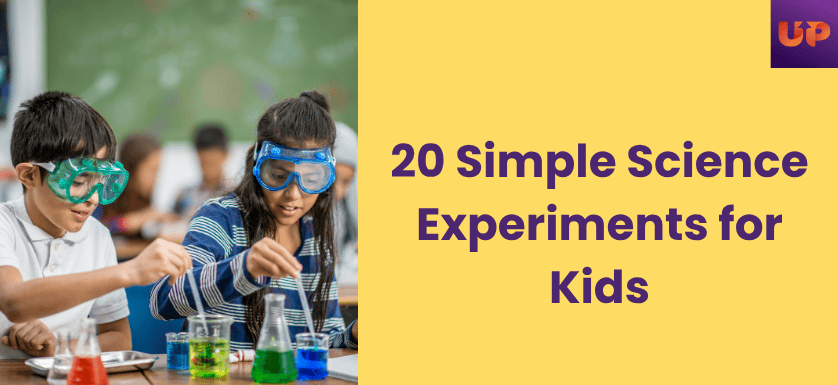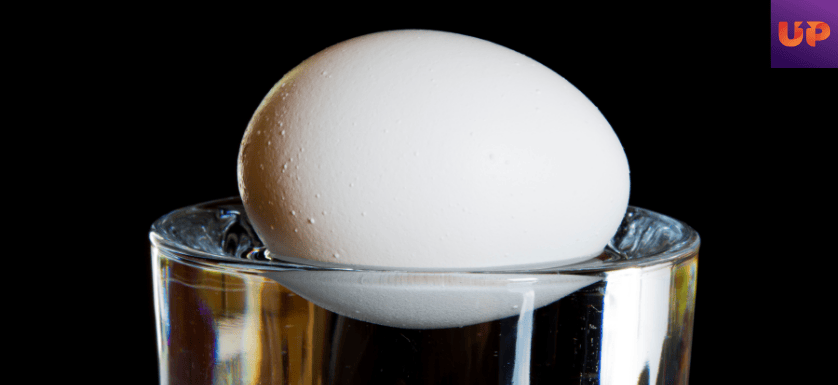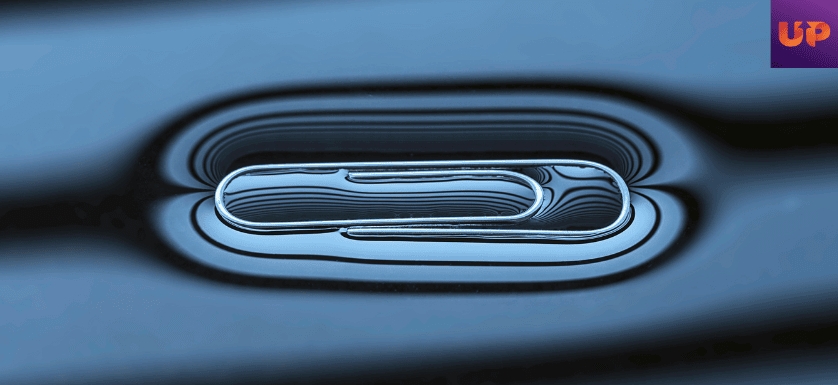
Kids learn better if they get to do practicals. Imagine a classroom where the teacher is explaining that if you mix salt and water together, it makes the water dense. The kids will have to believe it because their teacher is saying so. But, what are the chances that all the kids will remember this theory?
If we want the kids to remember what we teach them, it’s important we allow them to learn practically. In this blog, we have shared 20 simple science experiments for kids.
Did you know that our government is already focusing on better learning methods? NITI Aayog and Atal Innovation Mission have started an initiative -Atal Tinkering Labs. The government is going to offer a grant of ₹20 lakh to 50,000 schools each.
Is your school eligible for
Atal Tinkering Lab
By the time you get the ATL grant, you can conduct these simple science experiments for kids.
20 Simple Science Experiments for Kids
1. Volcano Eruption
Take some baking soda in a cup. Pour vinegar slowly and boom – it starts bubbling and looks like a mini volcano. This happens because baking soda and vinegar react and make carbon dioxide gas.
2. Rainbow in a Glass
Mix sugar and water in 4 glasses – more sugar in some, less in others. Add different food colors. Slowly layer them in one glass using a spoon. You’ll see a rainbow! It works because heavy (sugary) water stays down and light water stays on top.
3. Balloon Rocket
Take a balloon, blow it up but don’t tie it. Stick it to a straw and slide the straw on a string tied between two chairs. Let the balloon go and watch it zoom! The air coming out pushes it forward like a rocket.
4. Magic Milk
Pour milk into a plate. Add a few drops of food color. Dip a cotton bud in soap and touch the milk – the colors start dancing! That’s because soap breaks the surface tension of milk.
5. Lava Lamp
Fill a glass with oil and water. Add some food color. Now drop a fizz tablet like Eno. Colorful bubbles rise and fall – like a lava lamp! The gas from the tablet moves the colored water through the oil.
6. Static Balloon
Rub a balloon on your hair and bring it near small paper pieces. The balloon picks them up! That’s because rubbing creates static electricity, which attracts light things.
7. Invisible Ink
Dip a cotton bud in lemon juice and write on paper. Let it dry. Now hold the paper near a bulb. Slowly, the writing appears! Lemon juice turns brown with heat – that’s your secret message.
8. Dancing Raisins
Drop some raisins in a glass of soda. Wait a bit. The raisins start floating up and down. The gas bubbles from the soda stick to the raisins, carry them up, and burst – then the raisins fall down.
9. Water Walking
Take 3 glasses – fill 1st and 3rd with colored water. Keep the 2nd empty. Place tissue paper bridges between them. After some time, water walks through the paper into the empty glass! This happens because of capillary action.
10. Saltwater Egg Float
Put an egg in a glass of plain water – it sinks. Now add lots of salt and mix. Try again – the egg floats! Salt makes the water heavy (dense), so the egg can stay up.

11. Paper Bridge Challenge
Fold the paper in different ways – flat, accordion, or rolled. Put coins on top to test which bridge holds more weight. You’ll see – folds make the paper stronger!
12. Growing Bean in Cotton
Take a bean seed and place it on wet cotton in a jar. Keep it near sunlight. In a few days, you’ll see roots and shoots growing. It shows how plants start their life.
13. Shadow Experiment
Shine a flashlight on a toy and move the light. You’ll see the shadow grow or shrink. This helps you learn how light travels and how shadows form.
14. Color Mixing with Ice
Freeze red, blue, and yellow colored water in ice trays. Put the cubes in one plate and let them melt. The melting colors mix to make new ones. It’s a fun way to learn color blending.
15. Magnet Hunt
Take a magnet and test what sticks to it – paperclips, coins, pencils, spoons. Only some things stick. This helps you know what materials are magnetic.
16. Ball Bounce Test
Drop different balls from the same height – rubber ball, tennis ball, sponge ball. Some bounce high, and some don’t. That’s because materials have different elasticity.
17. Sound with Rubber Bands
Stretch rubber bands of different sizes over an empty box. Pluck them one by one. You’ll hear different sounds! The tightness and thickness change the pitch.
18. Mirror Reflection
Place a mirror flat and shine a light on it. Try different angles. You’ll see how light bounces. It’s fun to make patterns using mirror tricks.
19. Floating Paper Clip
Gently place a paper clip on a small tissue and let it float in water. The tissue sinks, but the clip stays floating. This works because of surface tension – like a skin on water.

20. Homemade Compass
Rub a needle with a magnet and place it on a leaf floating in water. The needle turns and points north-south! You’ve just made a compass.
Atal Tinkering Labs- Beyond Simple Science Experiments for Kids
Atal Tinkering Labs is here to shape the education industry in India. It not only introduces young learners to the latest technologies like AI, ML, and IoT but also motivates them to understand, apply, and use these technologies.
If you need help with getting the ₹20 lakh ATL grant, setting up the lab, conducting daily activities, or managing compliance reports, ATALUP can help you.